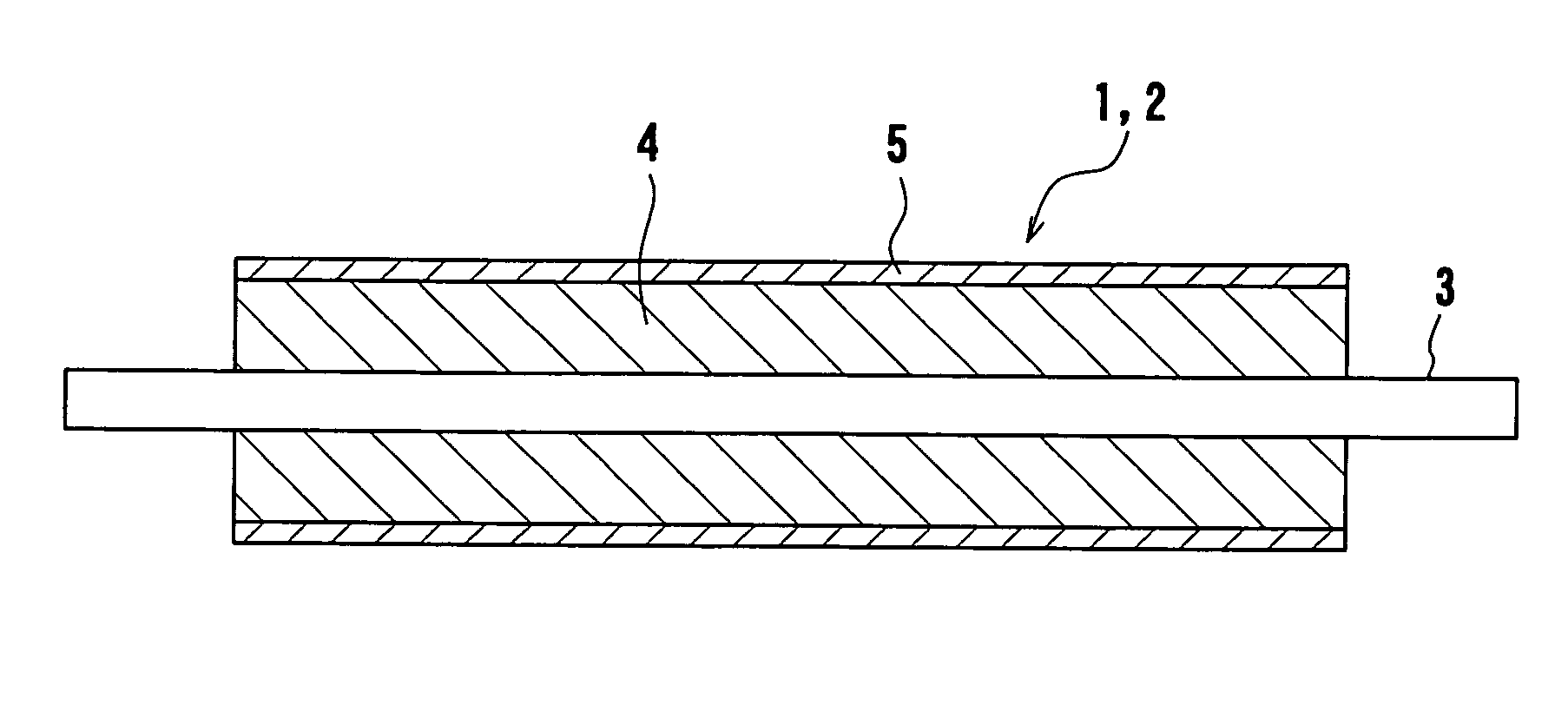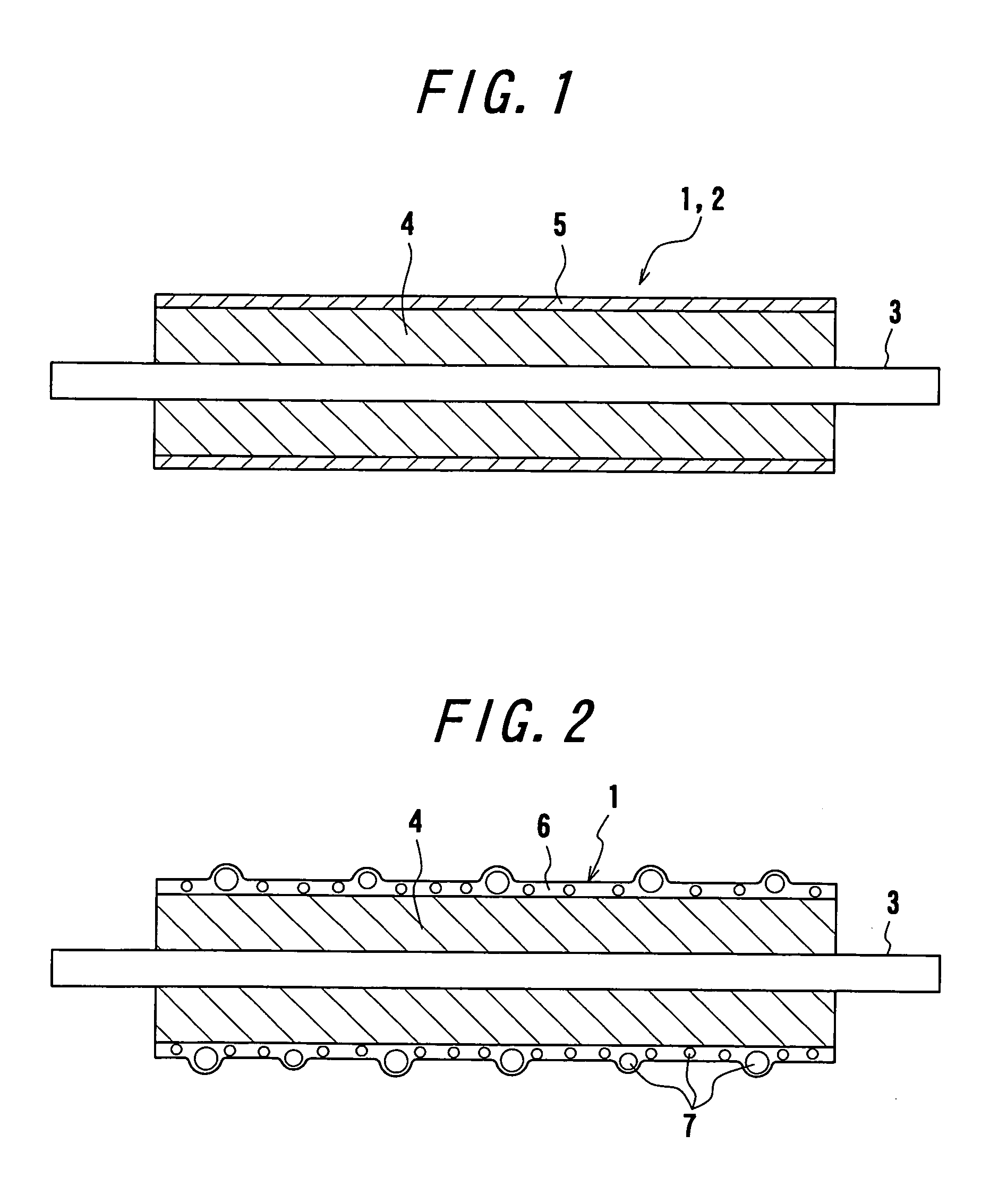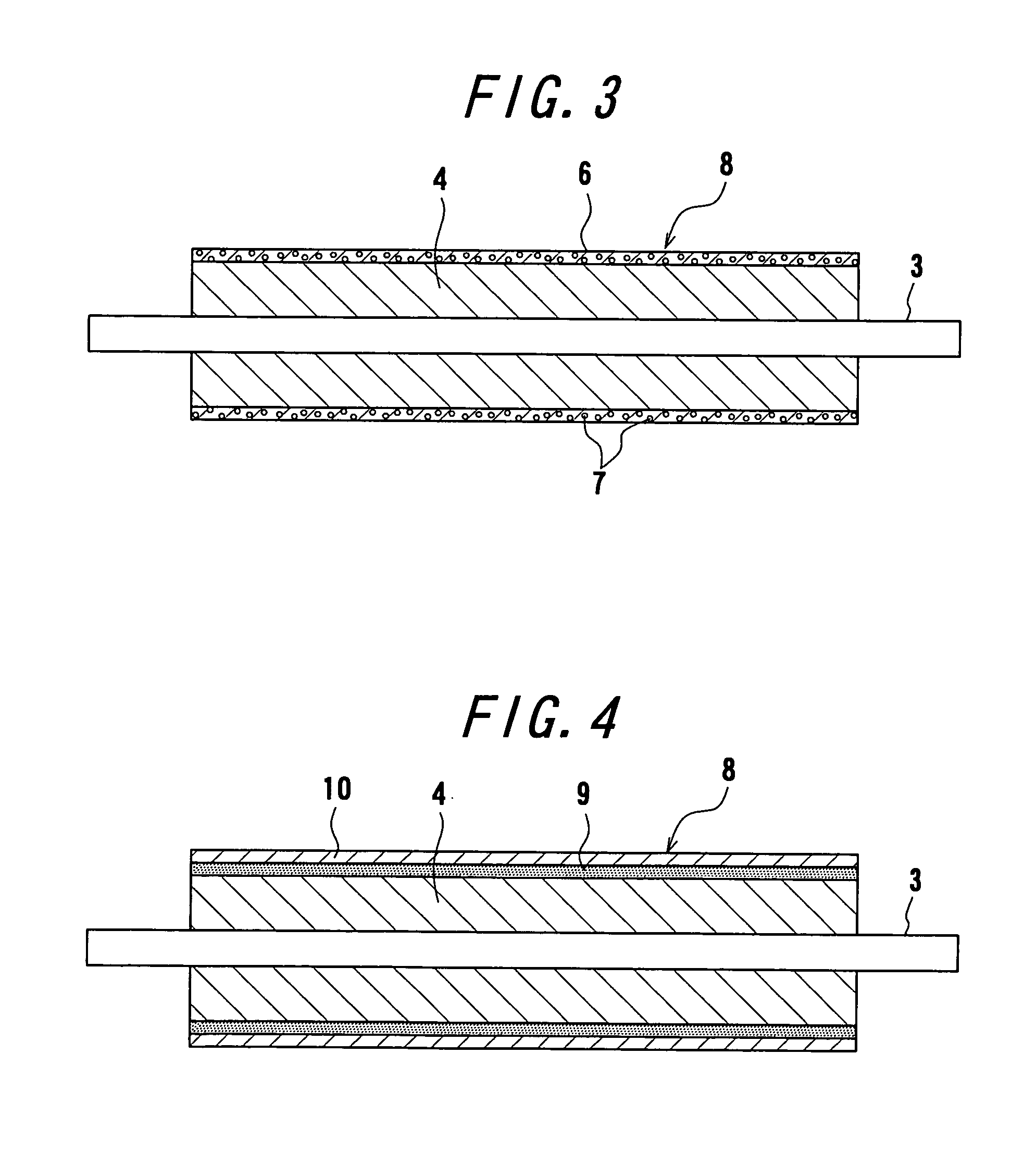Developing Roller, Charging Roller, Conductive Roller and Method for Producing the Same
a technology of developing rollers and charging rollers, applied in the field of conductive rollers, can solve the problems of contaminating the photosensitive drum, faulty image, easy stacking of toners on the surface of the roller, etc., and achieves the effect of shortening or skipping a drying step, improving the charging property of toners or photosensitive drums, and improving image quality
- Summary
- Abstract
- Description
- Claims
- Application Information
AI Technical Summary
Benefits of technology
Problems solved by technology
Method used
Image
Examples
examples
[0381]The following examples are given in illustration of the invention and are not intended as limitations thereof.
[0382]
example a-1
[0383]100 parts by mass of Sunnix FA952 [polyetherpolyol manufactured by Sanyo Chemical Industries, Ltd., OH value=37], 1 part by mass of SRX274C [foam stabilizer manufactured by Dow Corning Toray Silicone Co., Ltd.], 2.8 parts by mass of TOYOCAT NP [amine catalyst manufactured by Tosoh Corporation], 1.5 parts by mass of TOYOCAT EP [amine catalyst manufactured by Tosoh Corporation] and 59 parts by mass of SANFOAM IC-716 [tolylene diisocyanate manufactured by Sanyo Chemical Industries, Ltd.] are mechanically stirred and foamed. Then, a metal shaft having an outer diameter of 8.0 mm and a length of 240 mm is disposed into a metal cylindrical mold having an inner diameter of 16 mm, a length of 250 mm and a fluorine-processed surface through its opening and then 8.0 g of the above raw material for a polyurethane foam is charged from a foaming machine. Then, the mold charged with the raw material for the polyurethane foam is heated in an oven of 80° C. for 20 minutes and released to make...
example a-2
[0394]100 parts by mass of polyetherpolyol which is trifunctional, has a molecular weight of 9,000 and is produced by adding propylene oxide to glycerin, is added with 1.6 parts by mass of conductive carbon and 0.15 part by mass of dibutyltin dilaurate, sufficiently stirred and mixed, and then defoamed for 20 minutes with stirring under vacuum to be used as a polyol component. The polyol component has a hydroxyl value of 19 mgKOH / g. On the other hand, polypropylene glycol-modified polymeric MDI having a NCO content of 11% is defoamed for 20 minutes with stirring under vacuum and used as an isocyanate component. The polyol component and the isocyanate component are stirred at high speed and mixed by a binary type casting machine while regulating a ratio of the polyol component to the isocyanate component to be 101.75 / 13.70 (isocyanate index: 103). The mixed urethane raw material is charged into a metal cylindrical mold in which a metal shaft having an outer diameter φ of 8 mm is set ...
PUM
| Property | Measurement | Unit |
|---|---|---|
| volume resistivity | aaaaa | aaaaa |
| volume resistivity | aaaaa | aaaaa |
| particle size | aaaaa | aaaaa |
Abstract
Description
Claims
Application Information
 Login to View More
Login to View More - R&D
- Intellectual Property
- Life Sciences
- Materials
- Tech Scout
- Unparalleled Data Quality
- Higher Quality Content
- 60% Fewer Hallucinations
Browse by: Latest US Patents, China's latest patents, Technical Efficacy Thesaurus, Application Domain, Technology Topic, Popular Technical Reports.
© 2025 PatSnap. All rights reserved.Legal|Privacy policy|Modern Slavery Act Transparency Statement|Sitemap|About US| Contact US: help@patsnap.com



